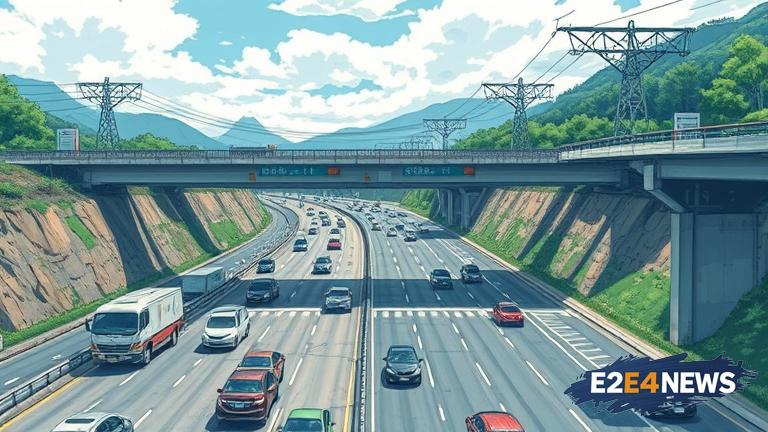Japan’s highway infrastructure has been under scrutiny in recent years due to the alarming number of cave-ins and cavities that have occurred on its roads. According to recent reports, there have been over 1100 incidents of cave-ins and cavities on Japan’s highways in the past 10 years. This staggering number has raised concerns about the safety and maintenance of the country’s infrastructure. More than 40 of these incidents were triggered by pipe damage, highlighting the need for improved maintenance and inspection of the country’s pipeline network. The majority of these incidents occurred on highways in urban areas, where the density of population and traffic is higher. The Japanese government has been criticized for its lack of investment in infrastructure maintenance, which has led to a decline in the overall quality of the country’s roads. The country’s aging population and declining workforce have also contributed to the problem, as there are fewer skilled workers available to maintain and repair the infrastructure. The Japanese Ministry of Land, Infrastructure, Transport, and Tourism has acknowledged the problem and has pledged to increase investment in infrastructure maintenance. However, the ministry has also stated that it will take time to address the issue, as many of the country’s highways are in need of repair. In the meantime, the government has implemented temporary measures to ensure the safety of drivers, including the installation of cameras and sensors to monitor the condition of the roads. Despite these efforts, the problem persists, and there have been several high-profile incidents of cave-ins and cavities on Japan’s highways in recent years. In one notable incident, a large cavity opened up on a highway in Tokyo, causing traffic chaos and disrupting the commute of thousands of people. The incident highlighted the need for improved maintenance and inspection of the country’s infrastructure, as well as the need for more investment in infrastructure development. The Japanese government has also been criticized for its lack of transparency in reporting incidents of cave-ins and cavities, with some critics arguing that the true number of incidents is higher than the official figures suggest. The country’s infrastructure maintenance industry has also been criticized for its lack of competitiveness, with some companies accused of prioritizing profits over safety. The Japanese government has pledged to address these issues and improve the overall quality of the country’s infrastructure. However, the problem is complex and will require a sustained effort to resolve. The government will need to invest in infrastructure maintenance, improve the competitiveness of the industry, and increase transparency in reporting incidents. The country’s aging population and declining workforce will also need to be addressed, as these factors are contributing to the problem. In conclusion, the issue of cave-ins and cavities on Japan’s highways is a complex and pressing problem that requires immediate attention. The Japanese government and infrastructure maintenance industry must work together to address the issue and improve the overall quality of the country’s infrastructure. This will require a sustained effort and investment in infrastructure maintenance, as well as improvements in transparency and competitiveness. The safety of drivers and the overall quality of the country’s infrastructure depend on it. The Japanese government has a responsibility to ensure that the country’s infrastructure is safe and well-maintained, and it must take immediate action to address the problem. The country’s economy and reputation depend on it. The issue of cave-ins and cavities on Japan’s highways is not just a domestic problem, but also an international concern. Japan is a major economic power and a key player in global trade, and its infrastructure is critical to the global economy. The country’s infrastructure maintenance industry must be improved, and the government must invest in infrastructure development to ensure that the country’s roads are safe and well-maintained. The Japanese government must also improve transparency in reporting incidents and increase competitiveness in the industry. The country’s aging population and declining workforce must also be addressed, as these factors are contributing to the problem. The Japanese government has a responsibility to ensure that the country’s infrastructure is safe and well-maintained, and it must take immediate action to address the problem.
